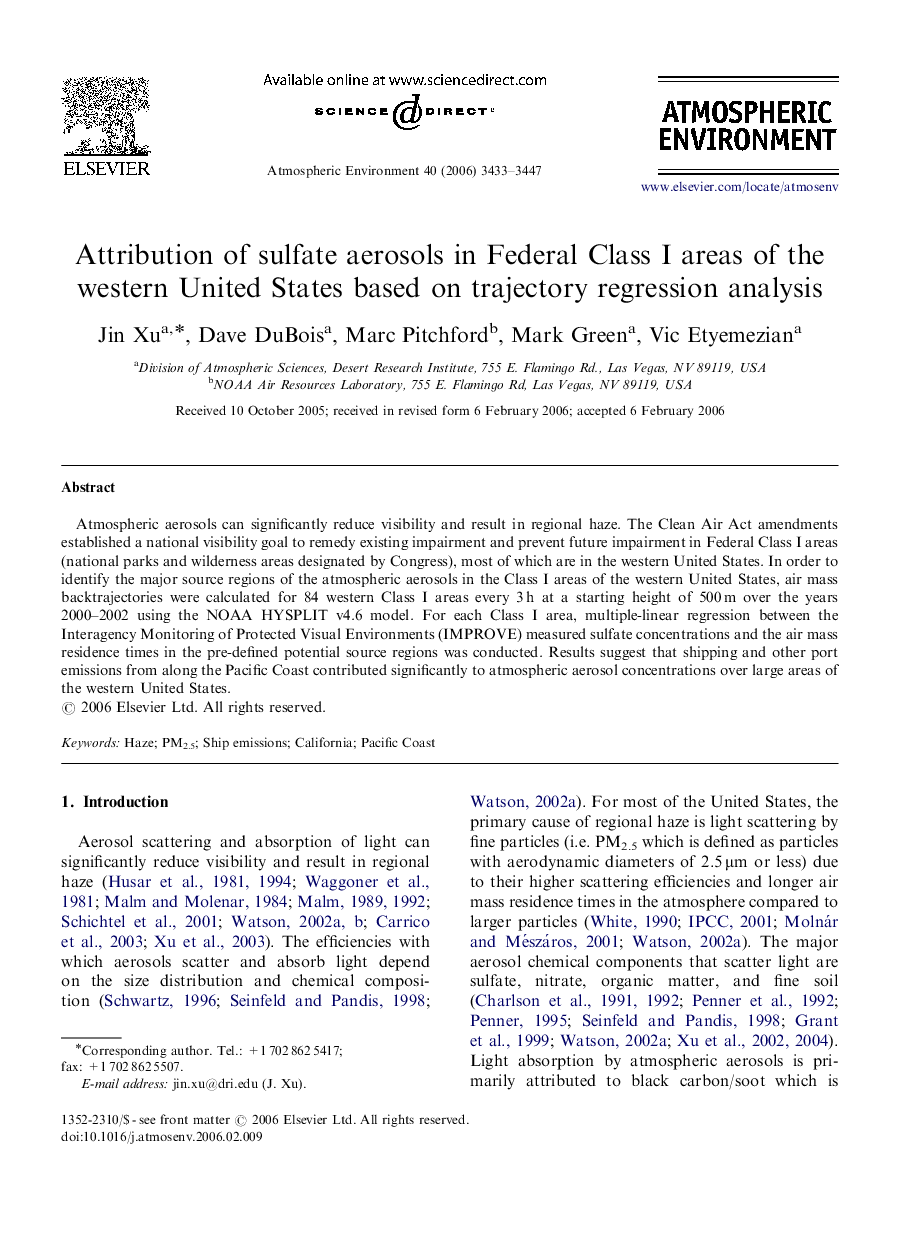| Article ID | Journal | Published Year | Pages | File Type |
|---|---|---|---|---|
| 4444707 | Atmospheric Environment | 2006 | 15 Pages |
Atmospheric aerosols can significantly reduce visibility and result in regional haze. The Clean Air Act amendments established a national visibility goal to remedy existing impairment and prevent future impairment in Federal Class I areas (national parks and wilderness areas designated by Congress), most of which are in the western United States. In order to identify the major source regions of the atmospheric aerosols in the Class I areas of the western United States, air mass backtrajectories were calculated for 84 western Class I areas every 3 h at a starting height of 500 m over the years 2000–2002 using the NOAA HYSPLIT v4.6 model. For each Class I area, multiple-linear regression between the Interagency Monitoring of Protected Visual Environments (IMPROVE) measured sulfate concentrations and the air mass residence times in the pre-defined potential source regions was conducted. Results suggest that shipping and other port emissions from along the Pacific Coast contributed significantly to atmospheric aerosol concentrations over large areas of the western United States.
